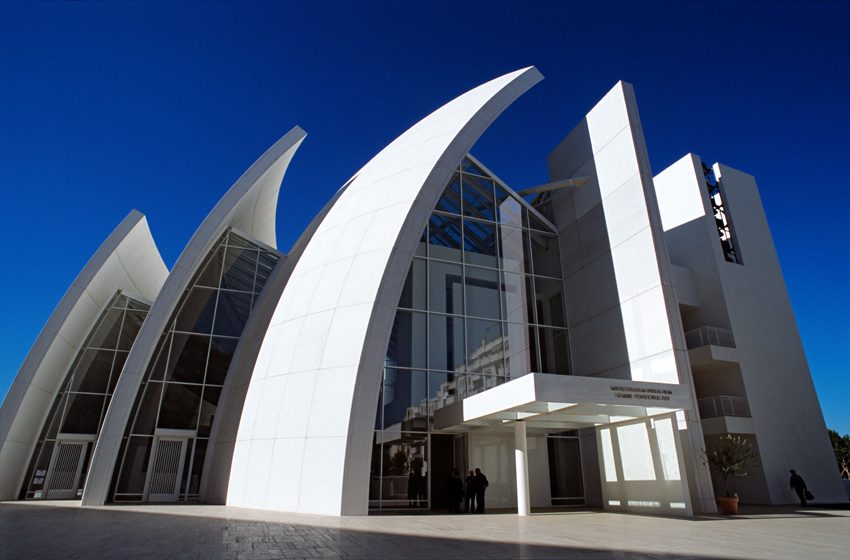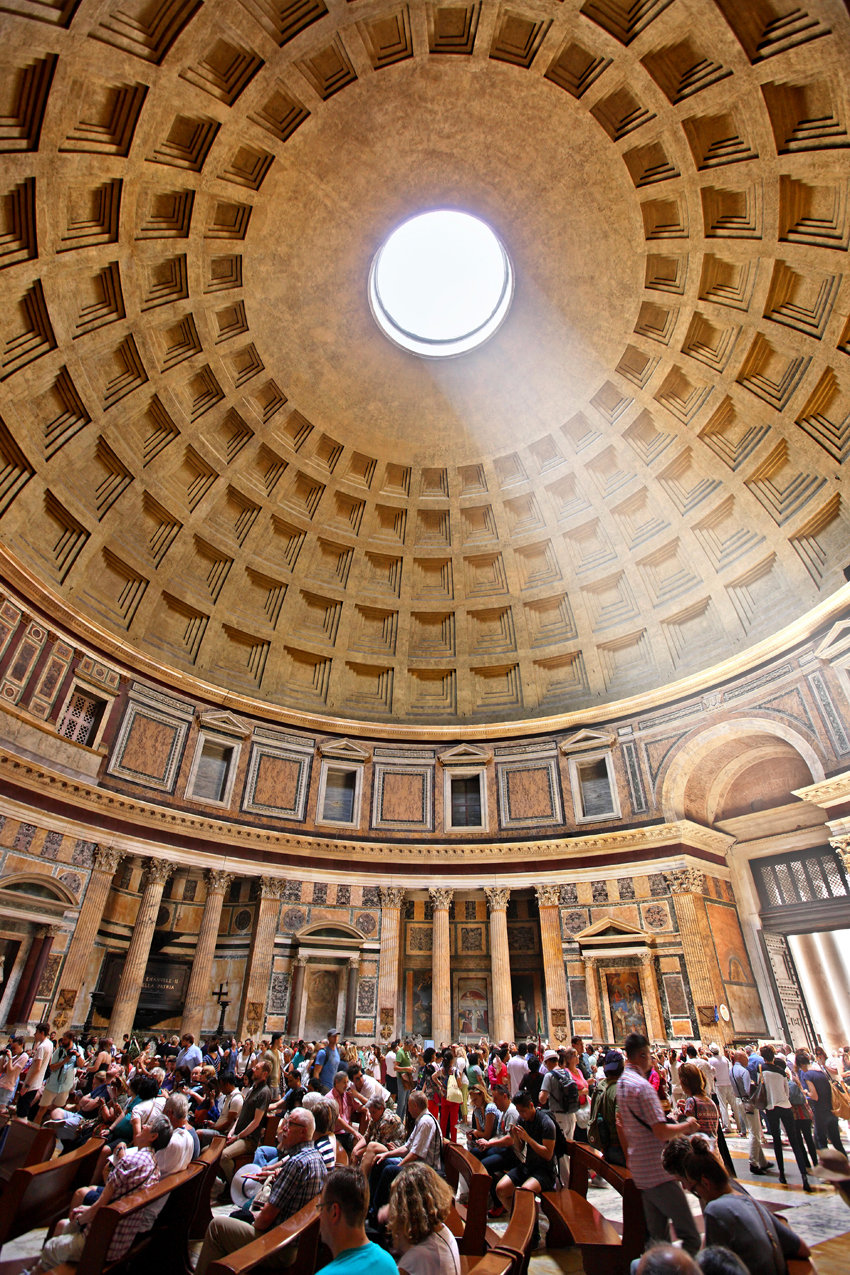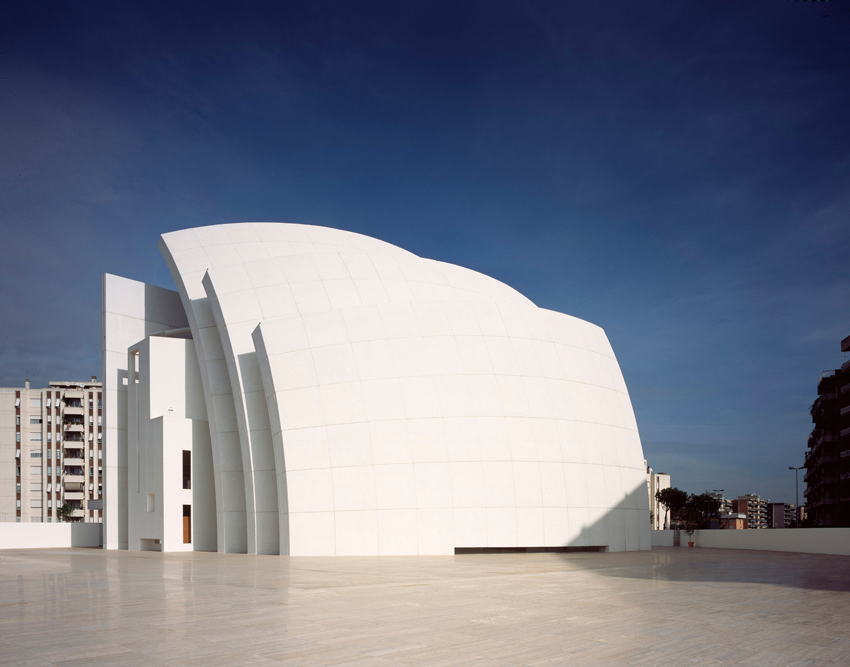Concrete Innovations
Learning Objectives:
- Explain the new technologies used in concrete manufacturing.
- Discover how innovative concrete products can improve project performance.
- Learn how to implement the latest concrete innovations in building and infrastructure projects.
- Demonstrate the importance of incorporating new technologies to enhance resilience and sustainability in the built environment.
Credits:
This course is approved as a Structured Course
This course can be self-reported to the AANB, as per their CE Guidelines
Approved for structured learning
Approved for Core Learning
This course can be self-reported to the NLAA
Course may qualify for Learning Hours with NWTAA
Course eligible for OAA Learning Hours
This course is approved as a core course
This course can be self-reported for Learning Units to the Architectural Institute of British Columbia
What do the Jubilee Church and the Pantheon have in common? They are both places of worship in Rome. But besides this, they are also both built with innovative concrete. The Romans mastered the use of concrete 2,000 years ago to build some of the most iconic structures ever built. Although different than today’s concrete, Roman concrete used the same principals, combining aggregate with a hydraulic binder. The aggregate included pieces of rock, ceramic tile, and brick rubble often recycled from demolished buildings. Volcanic ash, called pozzolana, was the favored binder where it was available. Gypsum and quicklime were used as binders also. And even 3,000 years before, the Egyptians used a form of concrete made with mud and straw to build the pyramids. Today of course, most concrete is made with portland cement, invented in 1824, and combined with high-quality quarried aggregate. Most modern concrete is augmented with innovative products and additives to enhance performance, both during its plastic and hardened states.

Photo: Elio Lombardo/Alamy Stock Photo
The Jubilee Church in Rome was built with innovative concrete in the early 2000s.
Innovative supplementary cementitious materials (SCMs) such as fly ash, slag cement, and silica fume are used to increase strength, durability, and workability. Chemical admixtures affect set time, freeze-thaw resistance, and flowability. Tiny fibers are added to increase ductility and control cracking. Carbon dioxide is injected into concrete to improve strength and capture greenhouse gasses. Some enhancements actually scrub pollutants from the surface of concrete and the surrounding atmosphere, which is what makes the concrete used to build the Jubilee Church so innovative. The exterior curved surfaces are coated with titanium dioxide (TiO2) cement that eats smog, helping to keep the surface clean.

Photo: Hercules Milas/Alamy Stock Photo
The historic Pantheon was built with Roman concrete hundreds of years ago.
Concrete is the most widely used building product in the world. It is mostly made locally with local materials. Concrete is cost-effective, available everywhere, strong, and durable. While conventional concrete can tackle most jobs, it is also the material of choice for the tallest buildings in the world and infrastructure designed to last centuries. Although concrete is not always synonymous with innovation, new products and manufacturing methods are enhancing concrete’s performance to tackle modern challenges. This course explores some of these latest innovations.
Self-Cleaning Concrete
Imagine concrete that can clean itself and even the surrounding air of harmful pollutants. This is what concrete made with TiO2 can do. The function of TiO2 cement is to break down harmful pollutants in the air via a reaction catalyzed by light, or photocatalysis, due to the TiO2 that is added to the cement during its production. This was inspired by the ability of certain microbes to break down harmful chemicals by modifying their oxidation state, also through photocatalysis. However, in photocatylitic cements, the reaction is carried out by the titanium, whereas microbes rely on natural enzymes. The cement breaks down both organic and inorganic pollutants. It is intended for use in urban centers, where air pollution and poor air quality are most pronounced.
An example of how TiO2 cement breaks down pollutants can be seen in its conversion of nitrogen dioxide (NO2), a harmful compound mostly produced by burning fuels in cars and trucks. NO2 is one of the compounds responsible for acid rain, smog, respiratory problems, and staining of buildings and pavements. The reaction with sunlight produces hydroxyl radicals that react with NO2 to produce NO3, which is dissolved by water after reacting with the cement surface.
Research data of a TiO2 cement manufacturer in the United States indicates that “up to 50 percent of these atmospheric pollutants could be reduced in some cities if only 15 percent of the buildings and roads were resurfaced with a TiO2 cement.” A TiO2 cement was first used for the curved panels on the Jubilee Church (also known as Dives in Misericordia Church) in Rome, which used the photocatalytic cement panels for its stylistic shells. Since then, an Italian company has dedicated decades of research to photocatalytic cement products. This cement is promising in its potential to greatly improve both urban life and the environment.1

















